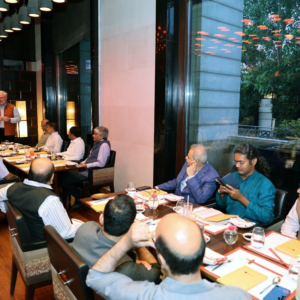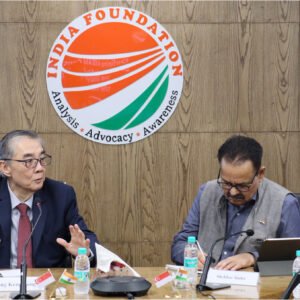The Union Budget 2023-24 has been characterised as the first budget for “Amrit Kaal”— A vision to see a transformed Bharat by the time the nation celebrates its Independence centenary on 15 August 2047. For the first time, we have a long-term road map of what Bharat should be in terms of its human and developmental index, with clear markers for reaching the desired end state over the course of the next quarter century.
This, by itself is a quantum leap forward from the incremental development policies followed for the most part since 1947. There was a hesitancy in envisioning a great and prosperous Bharat, which perhaps was a result of a socialist mind-set, mired in a philosophy that pedalled poverty as virtue and derided wealth as being sinful and corrupting. For decades since independence, the state set about controlling the means of production and telling the people what, how and how much they could produce and at what cost. The bureaucracy became all powerful as the arbiters of the nation’s destiny and this soon morphed into a political-bureaucratic-criminal nexus.
This was a recipe for disaster and by 1990, the nation was on the verge of bankruptcy. Then came the era of reforms, which since the last decade, have taken on a more focussed approach with major initiatives like the rolling out of the GST and the JAM trinity (Jan Dhan Yojana which has provided access to India’s poor to the banking sector, Aadhar—a unique biometric identifier and the Mobile penetration). This has enabled targeted provision of benefits to millions below the poverty line with near zero pilferage and brought about a sense of inclusivity to an unparalleled extent. Rural housing, electricity access, toilets for all, are but a few of the myriad schemes which has seen wide penetration across the length and breadth of Bharat in a truly transformative manner.
Budget 2023-24 builds on the India story which saw a rejuvenation in 2014 after a decade of stalled economic reforms. There is renewed focus on digitisation, indigenous defence manufacture, green energy, transparency in government, skilling of the work force, education sector reforms and the like. A host of initiatives have been announced to unleash the full potential of all citizens. In this new Bharat, there is little doubt that every citizen will stand up to be counted. But a slew of challenges remain.
It would be naive to think that the major powers will look on benignly as India moves ahead. A strong and economically powerful Bharat poses a threat to the economic interests of other powers. An Atmanirbhar Bharat would be an economic challenger, and with defence indigenisation taking place at a rapid rate, a rival to the worlds military industrial complex as an arms exporter. So, there will be attempts made by both India’s enemies as well as those with whom India has friendly relations, but who may view India as a serious competitor in future, to sabotage the Bharat growth story. An inkling of what the coming year holds can be seen in attempts being made to create rift in society by inciting the public. The ham-handed manner in which the BBC tried to inflame passions by making a documentary on the post-Godhra riots of 2002, is a case in point. Another is the hit job done by a US based short-seller on the Adani business group. We are now seeing fringe Khalistani elements raising their ugly heads in a clear bid at destabilising the country. We are likely to see radical Muslim elements within the country creating discord over inane issues. There will be others with perceived grievances, who will be funded by external actors like the George Soros Open Society Foundation, the Ford Foundation and the Rockefeller Foundation, all of whom, through a network of NGOs, will attempt to spread a divisive agenda. And in all this they will receive support from both China and Pakistan, who have their own axe to grind. Unfortunately, there will be elements of certain political parties who have their own agenda, who will also lend political support to such groups.
But these challenges are an intrinsic part of trying to create a strong and vibrant Bharat. But while the Government can provide the vision and the policy support, it is also up to each and every citizen to rise to the occasion, to achieve the objectives of Atmanirbharta. The nations public and private sectors too will have to play their role. The same goes for the nation’s bureaucracy. Can they measure up to the Prime Minister’s vision and play an enabling and supportive role? Therein lies the challenge.




